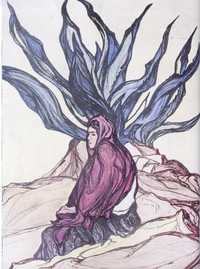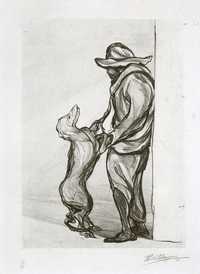The new SC regulations restore functionality and have a community perspective.

Claudia Curiel de Icaza, Federal Secretary of Culture
The new SC regulations restore functionality and have a community perspective.
The document's guidelines were conceived in terms of rights, not artistic disciplines; it considers not only creators, but all territories.
Nine months after taking office, the official welcomed the publication in the Official Gazette of the Federal District (DOF) of the internal regulations that will govern her office. In an interview with La Jornada, she noted that critics "just say, 'It's been removed, it's been cut, it's gone,'" to which she responded: "We are strengthening, decentralizing, listening to, and emphasizing the country's diversity."
▲ Secretary of Culture Claudia Curiel de Icaza during an interview with this newspaper. Photo by Alfredo Domínguez
Alondra Flores Soto
La Jornada Newspaper, Friday, July 25, 2025, p. 2
The new Internal Regulations of the federal Ministry of Culture (SC) evidently transmit a policy on the matter and make the machinery more efficient, avoid duplicating functions and emphasize guidelines, such as the centrality of indigenous and Afro-Mexican peoples with the recently created Strategic Unit of Living Cultures, Intangible Heritage and Interculturality, expressed Claudia Curiel de Icaza in an interview, during a long conversation to break down the administrative document that was published on July 22 in the Official Gazette of the Federation (DOF), signed by President Claudia Sheinbaum Pardo.
The Secretary of Culture stated: "All they say is: 'It was removed, it was cut, it disappeared,' but the regulations are a mathematical hieroglyph, and very soon, in approximately a month and a half, the Sectoral Plan (which arises from the National Development Plan) will be published. That's where the cultural policy we are implementing will be understood.
Four axes of strengthening
That's the essence of what we want to do, because they just want to read the rules in Morse code
. It predicts that the four pillars of the structure we want to strengthen in the coming years will be understood.
The official welcomed the publication of a regulation nine years after the one that preceded it: "Symbolically, it is very significant
, since the previous one was signed by Enrique Peña Nieto, who decreed the creation of the federal Ministry of Culture in 2015. Now it is signed by the first female President and by a secretary from an independent, institutional and university movement, with the aim of carrying out projects from the bottom up, since I had the opportunity to be in the trenches of the managers
."
In his office in Chimalistac, Curiel de Icaza scribbled an organizational chart on a piece of notepaper to illustrate the changes highlighted in the new guidelines for his office, including the change in the number of administrative units. What does the new regulation say? It's becoming more efficient. We went from 16 units to 12. Those four aren't disappearing; we're avoiding bureaucracy, since it's not necessary to have everyone in general directorates
, he points out. This is the case with International Affairs and the National Center for the Arts.
We think in terms of cultural rights, not artistic disciplines. We're developing a cultural policy for everyone, but it's not just about creators, but about all communities and territories. Culture is present in all these places; it's not just high culture. It's without hierarchies; it's everyday life, what you eat, a breadth of culture that we have to see as part of our daily lives and, therefore, we have to instrumentalize from a different perspective.
In response to questions about the changes, consider: we're not reinventing the wheel either. We're strengthening, decentralizing, working, listening, and putting them into the regulations. We're restoring what's most functional and providing a community and diversity perspective in this country
.
Living heritage, crucial
The focus, Curiel de Icaza describes, is on support for creation, as the goal is to increase and decentralize it in coordination with the states. The Living Cultures Unit, headed by anthropologist Diego Prieto, is an important initiative that seeks to care for and safeguard living heritage.
There was no force for the conservation and safeguarding of living heritage with the forcefulness that this government has. We are absolutely clear that we must work with communities to preserve their languages and territories as part of the public policy of justice for Indigenous and Afro-Mexican peoples. All ministries work transversally on this. This isn't rhetoric: it's in the Constitution and throughout the entire framework of public policy.
The Directorate of Territorial Action and Community Promotion clearly refers to a territorial government, rather than a theoretical one from offices; that's where you see the in-depth community work. Popular Cultures has done well, but it will implement the change in a strengthened, institutional manner, with regulations and, of course, with budgetary reinforcement
.
Regarding Circuits and Festivals, it promotes a unified vision of programming and circulation that allows for a balanced ecosystem of what is produced, circulated, and exhibited.
The internal regulations are being published less than a year after Claudia Curiel's appointment as federal Secretary of Culture. Behind them are "hours and hours of thoughtful work."
When the President invited me to work as secretary, I began studying the previous regulations, as well as those given to us by the previous administration. The nine-month operation then allowed me to review the organizational chart in practice.
In response to a specific question, he clarified that the budget remains the same in structure. No appointments will be made either: nothing new; the current ones are already there
. Regarding Lucina Jiménez, who heads the newly created Directorate of Training and Cultural Management, he pointed out that she is not listed in the regulations because she reports directly to me; she is part of my strategic team
.
The framework established by the DOF proposes a balanced and strengthened budget; that the areas be efficient, operational, and not bureaucratic. It's a brutal Tetris, but I love math and budget design
.
They praise the alliance between INBAL and the Postal Service to promote O'Higgins' work.
The public body's headquarters houses "Stamps of Life and Struggle," whose catalog was presented yesterday // Experts highlight the artist's relevance
Merry MacMasters
La Jornada Newspaper, Friday, July 25, 2025, p. 3
During the presentation of Pablo O'Higgins: Stamps of Life and Struggle, the catalogue of the exhibition mounted in 2022 at the Museo Nacional de la Estampa (Munae), the head of the Mexican Postal Service, Violeta Abreu, celebrated that this organization −where the event took place− had formed a strategic alliance
with the institution affiliated with the National Institute of Fine Arts and Literature (Inbal) to receive part of that exhibition, which was also mounted in Guanajuato.
We're making our debut as a permanent museum. This has always been a public space; however, it was previously accessible by appointment only. Since the change of administration, the Postal Palace has opened permanently
, Abreu continued. In one month, the exhibition has received 9,500 visitors.
In 2021, the National Institute of Art (INBAL) acquired 112 prints by O'Higgins (1904-1983) housed at the Munae, as well as two oil paintings deposited at the Museo Nacional de Arte (MUNAE), thanks to the interest and generosity of his widow, María O'Higgins. These works were added to a collection made up of donations and acquisitions made since the 1950s. To date , at least 200 prints, mostly lithographs
, by the American-born artist have been identified, although we know there are more
, said Eduardo Espinosa Campos, curator of the exhibition.
For decades, this researcher from the National Center for Research, Documentation and Information on the Plastic Arts (Cenidiap) has been studying the Pablo and María O'Higgins Collection housed there.
In the Patio de Carteros, Espinosa Campos revealed: “Five months before her death, María de Jesús de la Fuente Casas, known as María O'Higgins, confided in me that she felt reassured that the National Institute of Fine Arts (INBAL) had acquired Pablo's work, as it would remain safe in its collection.”
According to the expert, within the painter's vast artistic output
, his graphic work is as important as his easel and mural work. Other of his oldest known pieces are two engravings, one of which is on display in the exhibition. It dates from 1924, the year he arrived in Mexico
.
Social commitment
O'Higgins lived through an important historical moment after the Mexican Revolution, a time when artists felt fully identified with workers and their labor demands
. For Espinosa Campos, "Pablo's messages are clear; there are no hidden or half-baked signs, but direct ones. In his works, there is a voice that shouted loudly, very loudly, to make his personal position clear. His ideology is captured in the images of his works, in which he addressed uncomfortable topics for many six-year terms and which are only just beginning to be addressed."

▲ Mother Earth, 1975 Photo taken from the book Pablo O'Higgins: Pictures of Life and Struggle

▲ Friends, 1961. Photo taken from the book Pablo O'Higgins: Pictures of Life and Struggle
"Themes related to social movements, the most basic rights, and labor protection for historically disadvantaged sectors. That's why we find that his work addresses extreme poverty, child labor, abandonment and unemployment in rural areas, as well as rural-urban migration. O'Higgins' work is always timely due to the relevance of his messages, which continue to challenge us as citizens to take a stand against the social and political reality, not only in Mexico but also internationally."
Maricela Pérez García, a librarian who works in the documentation area of Cenidiap, recalled that she met María O'Higgins on February 28, 1998 , at the invitation of Eduardo Espinosa
, with the aim of collaborating in the organization of the collection that bears the couple's name. Through his life and work, Pablo tells us a part of the history of Mexico in the first half of the 20th century, the history of graphic art and its relationship with other artistic manifestations, and the social, political and cultural movements in which he participated
.
For Pérez García, Pablo's artwork speaks to everyone and survives the era in which it was created; it remains relevant today. Delving into his work leads us to reflect on our social commitment and love for humanity
.
At the event, moderated by Lilia Prado, curator at the Munae (National Institute of Natural Sciences), her colleague from the Munal (National Institute of Natural Sciences), David Caliz, emphasized the importance of publications as exhibition memoirs that leave a legacy of what is done in Inbal projects
. He expressed his hope that the catalog would be "a window, a beacon, that would help young researchers discover new ways of shedding light on O'Higgins's work."
The Pablo O'Higgins: Images of Life and Struggle exhibition will remain open until August 31st at the Palacio Postal (Tacuba 1, Historic Center). Visiting hours are Tuesday through Sunday from 10 a.m. to 5 p.m., and admission is free.
jornada





